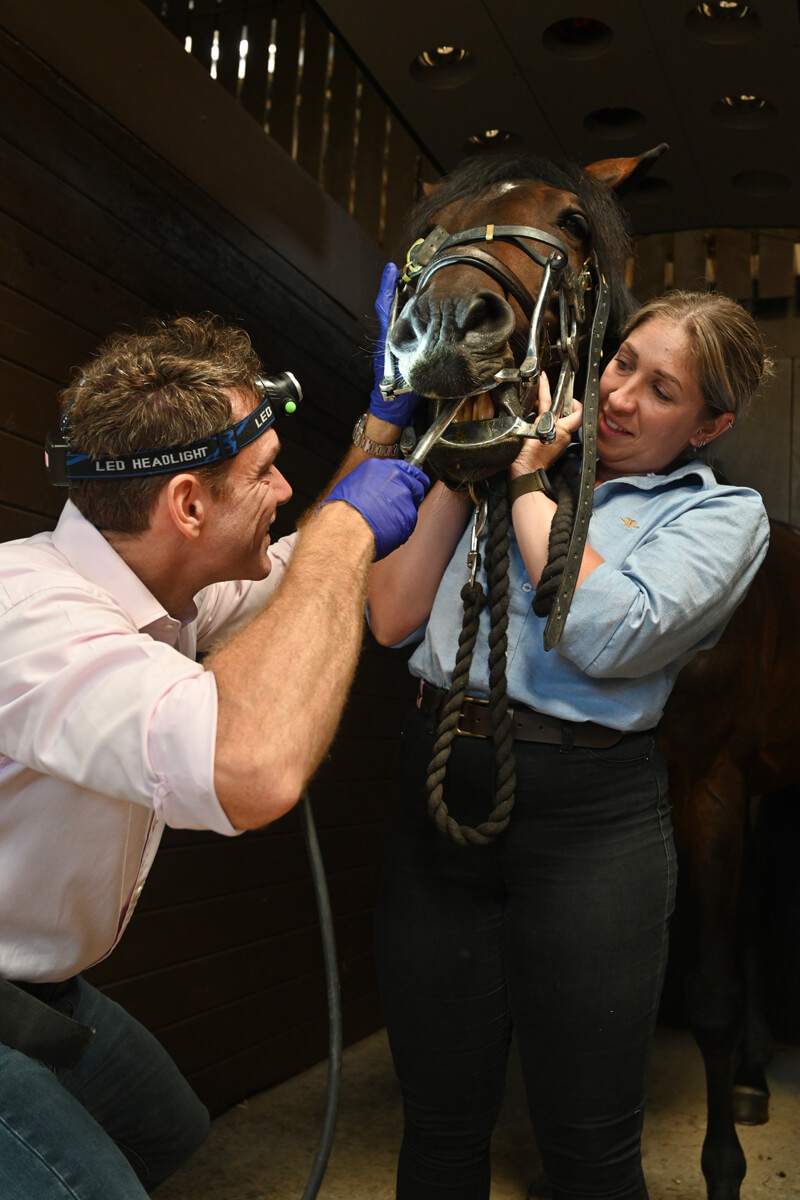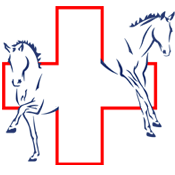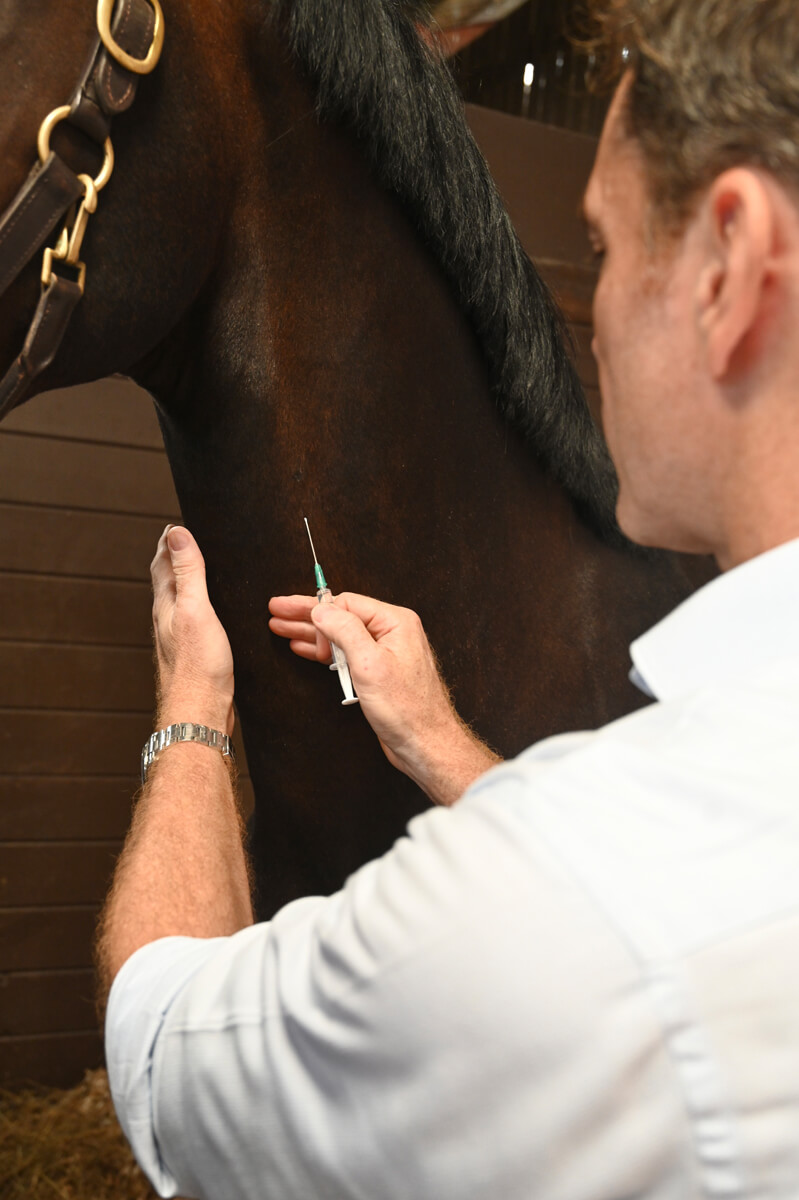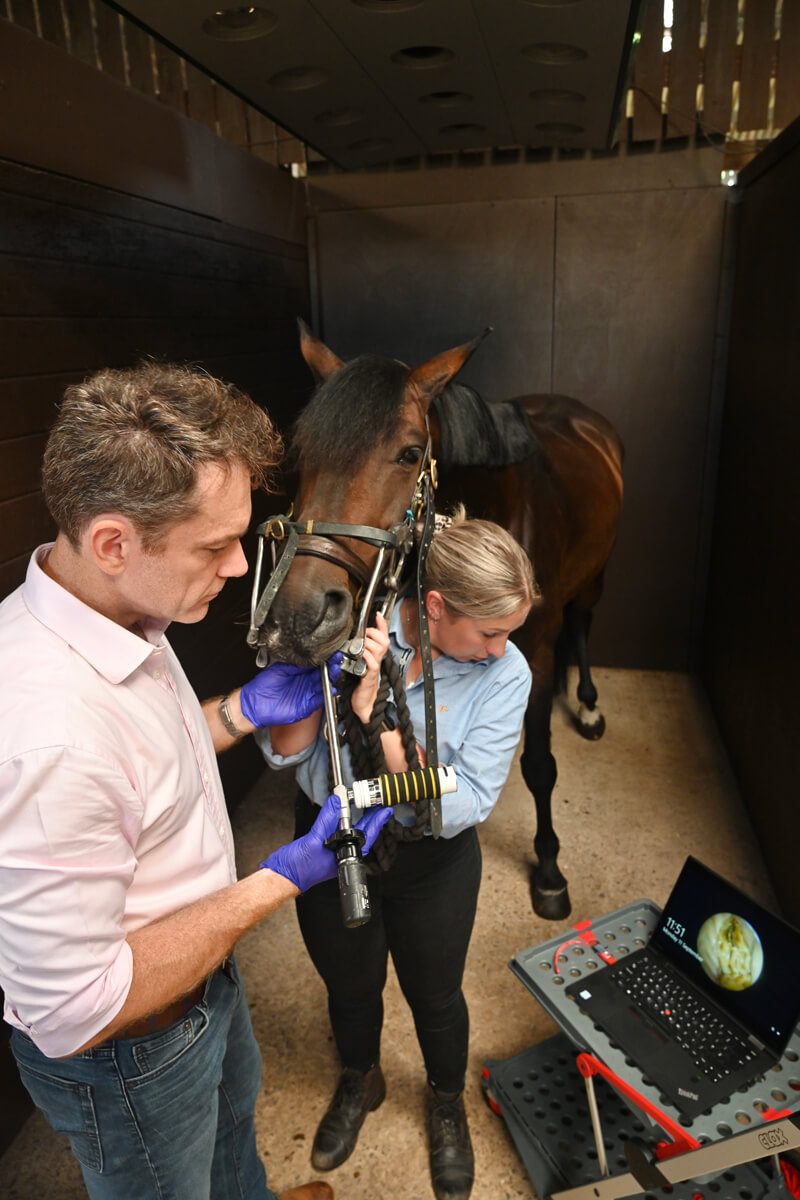Our mission at SHEQ is to prevent, protect and treat.
If we can do a really good job with our routine dental exams, we can prevent many complications that often result in our horses needing costly and extensive treatment.
There’s much more to an accurate dental exam than just a quick look and a quick rasp of sharp points.
Equine dentistry has significantly evolved in the last decade, and the quality of care that can be carried out ambulatorily is higher.
To allow this to happen, it is very important that a correct the setup is in place, even for just a standard routine examination, and that all efforts shall be made to reduce horses’ stress levels triggered by the unnatural sensation of a mouth gag and a dental rasp.


Sedation for Equine Dentistry
With the advancement of equine dentistry and the understanding of the wide array of dental pathology that may affect horses, it is now acknowledged and recommended best practice to administer light IV sedation with alpha2-adrenoreceptor agonist drugs prior to applying a mouth gag.
This will bring multiple benefits to horses, as they will be able to relax the whole musculature around the jaws and, importantly, their tongue.
A horse’s tongue is a very powerful muscle and understandably when a mouth gag is applied and a rasp is in their mouth, horses will keep moving their tongue in an attempt to dislodge the latter and achieve relaxation.
In turn, this invariably makes it difficult to perform a thorough and encompassing examination including both visual inspection and palpation of teeth anatomy, therefore posing a risk of a suboptimal assessment, as well as significantly increasing the length of time required for treatment and in turn aggravating horses’ stress levels.
For these reasons, a light IV sedation will relax both the masseter muscles as well as the tongue, which will in turn become less mobile and hence allow for a much more thorough examination of the oral cavity, the cheek teeth anatomy including gums, crowns and occlusal surfaces, and will reduce the time needed for treatment and therefore, importantly, a horse’s stress levels.

Oroscopy
Oroscopy is used to complement dental examinations and procedures, allowing both vets and clients to simultaneously visualise dental pathology that may not be easily assessable by just casting an eye into a horse’s mouth with a head torch.
- What can be seen – Examples of frequent pathology observed through an Oroscope are teeth fractures, abscesses, abnormal hooks, diastema (gap between two teeth often leading to food packing and gingival pathology), infundibular caries, extent of gingival retraction and/or dental dysplasia leading to periodontal disease, or idiopathic dentinal enamel defects or enamel hypoplasia associated to medical treatment in gestating mares.
- When to use Oroscopy – Our vets may advise complementing a mouth exam with Oroscopy for all those horses that may experience abnormal eating behaviours, quidding (dropping food while eating), reluctance to accept the bit, headshaking or even chronic weight loss. Furthermore, Oroscopy can be used to complement radiographic mouth examinations.Whilst x-raying a horse’s mouth may allow to visualise and understand complications affecting those parts of horses’ teeth covered by gums, for instance tooth roots or osteomyelitic periodontal infections, Oroscopy can observe any linked soft tissue pathology within the oral cavity and therefore assist in all those new investigations or treatment follow-ups where the risk of complications may warrant for further understanding.

Highly recommend the team at Surrey Hills Equine Vets. Can’t speak highly enough of Corrado. He was great and extremely informative with regard to the horse vetting and X-rays when we spoke over the phone. He was extremely professional and gave a lot of clarity on the day to the unfortunate findings. Would definitely use again.
Call Now
Contact us now on
01306 249 944
or email info@surreyhillsequine.com.
